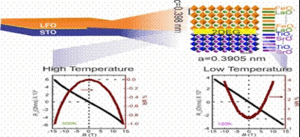TAG: GS 3: SCIENCE AND TECHNOLOGY
THE CONTEXT: In a remarkable development, researchers at the Institute of Nano Science and Technology (INST) in Mohali, India, have engineered a transparent conducting layer between two insulating materials, enabling the creation of a two-dimensional electron gas (2DEG) with room temperature spin polarization.
EXPLANATION:
- This innovation marks a significant leap forward in the field of spintronics, potentially paving the way for ultra-fast, low-power electronic devices and advanced quantum technologies.
The Science Behind 2D Electron Gas and Spintronics
- Spintronics, an emerging field that explores the manipulation of the spin degree of freedom in electrons, offers functionalities far beyond traditional charge-based electronics.
- The spin of an electron, which is its intrinsic angular momentum, can be aligned in a particular direction, and this alignment can be harnessed to carry and process information.
- For decades, spintronics remained largely theoretical, with concepts such as spin currents and spin manipulation appearing almost like science fiction.
- However, recent advancements in material science and nanoscale fabrication have enabled scientists to create systems that exhibit these exotic properties.
Creation of the Transparent Conducting Interface
- The INST team achieved a groundbreaking feat by producing a transparent conducting interface between the insulating oxides LaFeO3 and SrTiO3.
- By growing superlattices and heterostructures of these oxide materials, they realized a 2DEG at the interface, capable of sustaining spin polarization at room temperature.
- This is a significant departure from previously reported interfaces involving SrTiO3, which did not exhibit such phenomena at high temperatures.
Unique Properties and Applications of the 2DEG Interface
- The 2DEG at the LaFeO3-SrTiO3 interface exhibits remarkable properties due to the spin polarization of electrons.
- When subjected to a magnetic field, these electrons experience reduced resistance, a phenomenon known as negative magnetoresistance, and they also deflect the current sideways, an effect termed the anomalous Hall effect.
- These properties arise from the structural transition of SrTiO3 at the interface, which is temperature-dependent.
- The ability to manipulate spin in transparent materials opens up new possibilities for the development of light-controlled spintronic devices.
- For instance, transparent electronics that integrate spintronics within existing displays or solar cells could lead to innovative device architectures.
- Imagine a transparent phone screen capable of processing information with spin currents, or a solar cell that not only generates electricity but also manipulates spin for advanced functionalities.
- These applications were previously unattainable with traditional charge-based devices.

Figure showing the interface with lattice parameters, the lower panel of the figure is showing the magnetoresistance and Hall resistance at low (100K) and high temperature (300 K).
Potential Impact on Quantum Devices and Data Storage
- The realization of a conducting transparent oxide interface with spin polarization at room temperature has significant implications for the future of quantum device physics.
- Such interfaces could be integral to the development of dissipation-less electronics and spin-electronic quantum devices, which are essential for next-generation data storage media and quantum computing.
- The integration of these materials into quantum devices could revolutionize the field, enabling faster data transfer and more efficient data storage, while also reducing power consumption.
Spintronics
- It is a technology that utilizes both the intrinsic spin of an electron as well as its charge in transport devices.
- Spintronic systems are of particular interest in field of quantum computing, nano-electronic devices and modern electronic storage devices.

